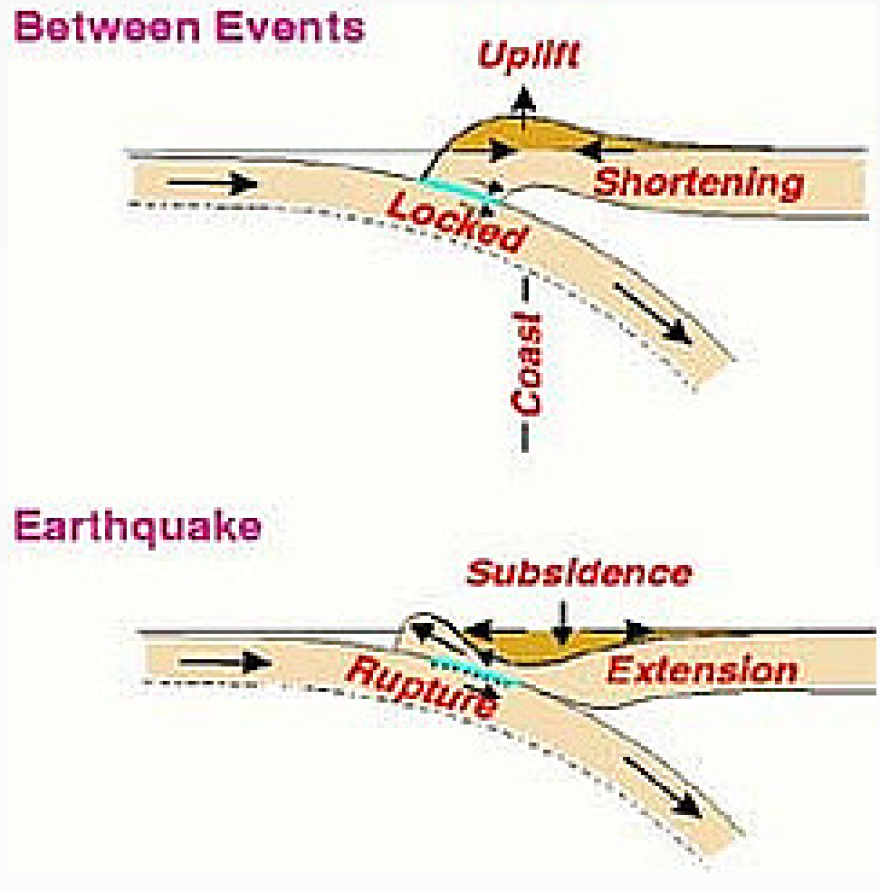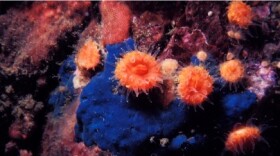Three years ago today, a massive earthquake ripped through Japan, and the resulting tsunami sent thousands of tons of debris floating toward North America.
But a tsunami could also happen right along the Northwest coast, on the Cascadia subduction zone, which stretches from northern Vancouver Island to California’s Cape Mendocino.
'Roughly Every 300 to 500 Years, It Lets Go'
Right now, two tectonic plates there are grinding together. The Juan de Fuca plate is getting shoved underneath the plate that we sit on, at the speed that human fingernails grow.

But instead of sliding past each other, the plates are jammed by friction. When they finally unstick, we will be the first to feel the resulting earthquake and the tsunami that could follow within hours.
“That thing locks up, and roughly every 300 to 500 years, it lets go,” said Ted Buehner of the National Weather Service.
The result is something called a “megathrust” earthquake, and the last time that happened was at about nine o’clock on a winter night in 1700.
The 'Orphan Tsunami' Of 1700
The quake, which shook for several minutes, sent a 30-foot tsunami across the Pacific. The waves traveled about 10 hours before hitting Japan, where they washed away houses on Honshu Island.
Legends and stories mention a “shaking, jumping up and trembling of the earth beneath, and a rolling up of the great waters.” Though there was no written record left of the event on this continent, Japanese records were incredibly detailed.
Hundreds of years later, geologists put two and two together and realized that the so-called “orphan tsunami” must have originated from a parent earthquake, and that it likely happened off the Pacific Northwest coast.
A distinct layer of beach sand near the Copalis River — and a graveyard of red cedars drowned in sea water — are two indications that the entire coastline dropped 3 to 6 feet. Buehner says the same would happen with an earthquake of that size today.
What We Can Expect
When — not if, says Buehner — that quake happens, the areas around Whidbey Island, Anacortes and Port Townsend would likely get flooded. As for Puget Sound, he says, though tidal waves likely would not hit the shoreline, boat owners would need to undock and head for open water to avoid colliding with each other.
Later this year, Grays Harbor County plans to begin construction on a new elementary school gym capable of withstanding 50-foot tsunami surges while keeping 1,000 people dry on its roof — just in case.








